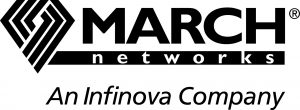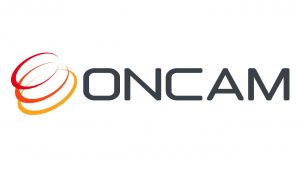ONVIF Newsletter July 2018

Greetings from Per Björkdahl,
It’s hard to believe that 2018 is more than halfway complete, a year in which we celebrate our founding in 2008 and when we look back at the progress ONVIF has made in our first ten years. With some excitement, we’re announcing the winner of the first-ever ONVIF Open Source Spotlight Challenge, where developers from many walks of life submitted innovative solutions for video streaming that could eventually be incorporated into a new ONVIF profile.
News
ONVIF Announces Winner of Open Source Spotlight Challenge
The ONVIF Open Source Spotlight Challenge is a wrap! We called on developers from all walks of life to compete for a $20,000 prize pool by creating an open source, working video streaming application that can contribute to future ONVIF profile development. With a focus on Profile T for advanced video streaming, applicants connected to online prototype cameras with Profile T functionality, and developed a host of innovative and creative solutions.
![]()
ONVIF Questions and Answers on Conformance
Have you ever wondered what is the best method for determining if a product is ONVIF conformant? Or what is involved in the conformance process? ONVIF has developed a new Frequently Asked Questions guide to address the most commonly asked questions about what it means to be ONVIF conformant and what this means to systems designers, end-users, and manufacturers. You can find the FAQ and more resources on conformance here.
![]()
ONVIF Holds Largest Developers’ Plugfest Ever
ONVIF hosted its 18th ONVIF Developer’s Plugfest (ODP) June 6-8 in Malmo, Sweden, offering interoperability testing for six ONVIF Profiles, including the Release Candidate of Profile T for advanced video streaming. This was the largest Plugfest in the 10-year-history of ONVIF, with attendees logging 450 hours of total testing time during the three-day event, surpassing the previous record of 300 hours.
![]()
ONVIF Celebrates 10 Years at IFSEC and ISC West 2018
As a part of our 10th anniversary celebration, ONVIF is highlighting a variety of member companies and their years of ONVIF membership. At ISC West, we met with close to 20 companies, learned what ONVIF means to them, and how they use our specifications in daily operations. We continued this campaign at IFSEC and were able to meet with even more companies. Thank you to all who participated, and be on the lookout for upcoming 10th anniversary activities!
![]()
ONVIF Use Case Working Group
ONVIF has always been a member-driven organization, with various committees and working groups available for members to join that lead the charge in interoperability standards. Each committee wears a different hat, ranging from strategy and budgeting, to development of core specifications, to development of profiles. Within the communication committee, responsible for external and internal communication, is a group known as the Use Case Working Group.
![]()
ONVIF Member Spotlight
Jeff Corrall, Strategic Partnerships & Integrations, March Networks
User level
![]()
ONVIF Member Spotlight
Jumbi Edulbehram, Regional President – Americas, Oncam
Contributing level
![]()
Greetings from Per Björkdahl!
Dear colleagues,
It’s hard to believe that 2018 is more than halfway complete, a year in which we celebrate our founding in 2008 and when we look back at the progress ONVIF has made in our first ten years. With some excitement, we’re announcing the winner of the first-ever ONVIF Open Source Spotlight Challenge, where developers from many walks of life submitted innovative solutions for video streaming that could eventually be incorporated into a new ONVIF profile.
The world’s growing adoption of streaming video — for surveillance and myriad other purposes — are certainly providing ample opportunities and challenges for those of us that work in this space, and we’re excited by the possibilities presented by the winning submissions. I encourage you all to check out the great diversity of ideas presented by the winning submissions and the finalists, which are highlighted on the ONVIF blog.
With that, I wish all of you a pleasant few months ahead!
With many thanks,
Per Björkdahl
Chair, ONVIF Steering Committee
![]()
Complete News
ONVIF Announces Winner of Open Source Spotlight Challenge
The ONVIF Open Source Spotlight Challenge is a wrap! We called on developers from all walks of life to compete for a $20,000 prize pool by creating an open source, working video streaming application that can contribute to future ONVIF profile development. With a focus on Profile T for advanced video streaming, applicants connected to online prototype cameras with Profile T functionality, and developed a host of innovative and creative solutions.
“The submissions to the ONVIF challenge were very inventive, and could give ONVIF some new perspectives on potential ways to approach some of our industry’s current challenges,” said Hans Busch, Chairman of the ONVIF Technical Committee. “We are excited to share with you the solutions of these innovative minds.”
The winning app, CAM X, submitted by Canada-based developer Liqiao Ying, offers an Artificial Intelligence-based object detection system that utilizes blockchain solutions for sorting information obtained from ONVIF cameras.
Thank you to all who entered, and congratulations to our winner! You can check out all the finalists on the ONVIF blog.
![]()
ONVIF Questions and Answers on Conformance
Have you ever wondered what is the best method for determining if a product is ONVIF conformant? Or what is involved in the conformance process? ONVIF has developed a new Frequently Asked Questions guide to address the most commonly asked questions about what it means to be ONVIF conformant and what this means to systems designers, end-users, and manufacturers. You can find the FAQ and more resources on conformance here.
![]()
ONVIF Holds Largest Developers’ Plugfest Ever
ONVIF hosted its 18th ONVIF Developer’s Plugfest (ODP) June 6-8 in Malmo, Sweden, offering interoperability testing for six ONVIF Profiles, including the Release Candidate of Profile T for advanced video streaming. This was the largest Plugfest in the 10-year-history of ONVIF, with attendees logging 450 hours of total testing time during the three-day event, surpassing the previous record of 300 hours.
During the Plugfest, engineers and developers from ONVIF member companies tested their products’ implementation of ONVIF Profile Specifications with other ONVIF Profile-conformant products to ensure interoperability between vendors. In addition to Profile interoperability tests, attendees were offered one hour of testing using the ONVIF Device/Client Test Tools, as well as the opportunity to discuss with Test Tool developers any issues that arose during conformance testing.
The ONVIF Developers’ Plugfest drew 62 attendees from 26 member companies from 16 different countries. Attendees tested six ONVIF profiles for interoperability, including Profile S for IP-based video systems, Profile C for IP-based access control, Profile G for edge storage, Profile Q for out-of-the-box interoperability, Profile A for broader access control configuration and the Release Candidate for Profile T for advanced video streaming.
![]()
ONVIF Celebrates 10 Years at IFSEC and ISC West 2018
As a part of our 10th-anniversary celebration, ONVIF is highlighting a variety of member companies and their years of ONVIF membership. At ISC West, we met with close to 20 companies, learned what ONVIF means to them, and how they use our specifications in daily operations. We continued this campaign at IFSEC and were able to meet with even more companies. Thank you to all who participated, and be on the lookout for upcoming 10th anniversary activities!
![]()
ONVIF Use Case Working Group
ONVIF has always been a member-driven organization, with various committees and working groups available for members to join that lead the charge in interoperability standards. Each committee wears a different hat, ranging from strategy and budgeting, to development of core specifications, to development of profiles. Within the communication committee, responsible for external and internal communication, is a group known as the Use Case Working Group.
The Use Case Working Group is responsible for developing real-world use cases in response to current market demands that ONVIF does not presently address. The goal is for these use cases to be used as input for ONVIF specifications, and are then provided to the technical committee to contribute to the development of future profiles, as well as to maintain the ONVIF technical roadmap. With a robust marketplace full of expanding and innovative technologies, the use case seeks out anything that may fall under the ONVIF scope in some way, but that can be technically expanded on to provide new solutions.
The Use Case Working Group is the only working group that allows non-members to join, by invitation. If you are interested in contributing to their efforts, please send us an email with your interest!
![]()
ONVIF Member Spotlight


Jeff Corrall, Strategic Partnerships & Integrations, User level
What does March Networks do?
March Networks is a global provider of video surveillance and video-based business intelligence solutions.
How long has March Networks been in the physical security market?
March Networks was founded in 2000, and has been providing enterprise-class video solutions to the market for 18 years.
Why did you join ONVIF and how long has your company been a member of ONVIF?
March Networks was among the first companies to become an ONVIF member back in 2008. We joined ONVIF because we recognized – and were quite excited about – the potential impact a common standard could have in simplifying video device interoperability. Ten years ago, everyone in the industry was struggling with different, non-standard protocols, and wishing for a solution that was much more plug-and-play for customers.
To which specific profiles does your company’s products conform and why is that beneficial to your business?
Our video recorders, IP cameras and VMS conform to Profile S and the benefit to our business is very clear. Today, the majority of cameras coming into the market support ONVIF, and our experience has generally been that we can arrive at a customer site and be 95% confident that we’ll be able to connect with any brand of camera – even if we don’t have a direct integration – thanks to ONVIF. The protocol removes the complexity integrations used to generate. More importantly, it leaves customers free to choose the products they want to use, rather than narrowing their options to a subset of products because of the difficulties an integration might otherwise represent.
What does it mean to you to be a member of ONVIF and what kinds of business impacts have you seen as a result?
Our ONVIF membership – and the majority adoption of ONVIF industry-wide – allows March Networks to focus more time and resources on our product strategy, and take a more tactical approach to our direct product integrations. Ultimately, we are hoping to reach a point where all cameras, recorders, encoders etc. connect via ONVIF and everything just works, similar to how many of us rely on wireless protocols to connect our personal devices today without really thinking about it.
![]()
ONVIF Member Spotlight


Jumbi Edulbehram, Regional President – Americas, Contributing level
What does Oncam do?
Oncam is a global technology innovator offering a cloud-based business intelligence platform with industry-leading 360-degree video capture and analytics at its core. The company creates and deploys an open platform with specialized IP video and dewarping technology to create award-winning video-led solutions for stakeholders from the C-suite to the security officer in multiple customer sectors. Oncam allows better decisions to be made based on real-world and digital data.
How long has Oncam been in the physical security market?
Since 2003.
Why did you join ONVIF and how long has your company been a member of ONVIF?
The company became a Contributing Member in 2014. The main reason for joining was to contribute to the effort of defining interoperability standards for ease of integration. Having IP camera products as well as cloud-based software products, Oncam is in a unique position of understanding the need for both, the traditional camera interfaces as well as the new interfaces that will be needed in the future.
Is your company involved in any particular working groups?
Oncam’s Steven Dillingham, Software and Integration Manager, and Daniel Perez, Cloud Systems Manager, participate in the ONVIF working group that develops new specifications. Dillingham also takes part in working groups that develop new profiles and improve the Device Test Tool for ONVIF Conformance. Additionally, Dillingham works as the Chairman of the ONVIF Developers’ Plugfest Task Force, organizing and attending events held twice each year around the world to enable the global ONVIF membership to gather for testing of their implementations.
To which specific profiles does your company’s products conform and why is that beneficial to your business?
Profile S, which is designed for IP video systems. As a manufacturer of panoramic 180- and 360-degree IP-based cameras, having open standards that allow our cameras to seamlessly integrate with the leading video management systems on the market allows customers to build a customized solution using our cameras as well as their preferred vendors for VMS, data storage, audio, etc.
What does it mean to you to be a member of ONVIF and what kinds of business impacts have you seen as a result?
As an IP camera manufacturer, Oncam has benefited tremendously from open standards between cameras and VMS. ONVIF’s video conformity through Profile S allows more users to implement solutions across their organizations, creating advantages for all parties involved. Cost reduction, standardized device detection and streamlined engineering are just a few, along with propelling the transition from analog to digital solutions, which opens up the benefits of IP-based physical security products to everyone.